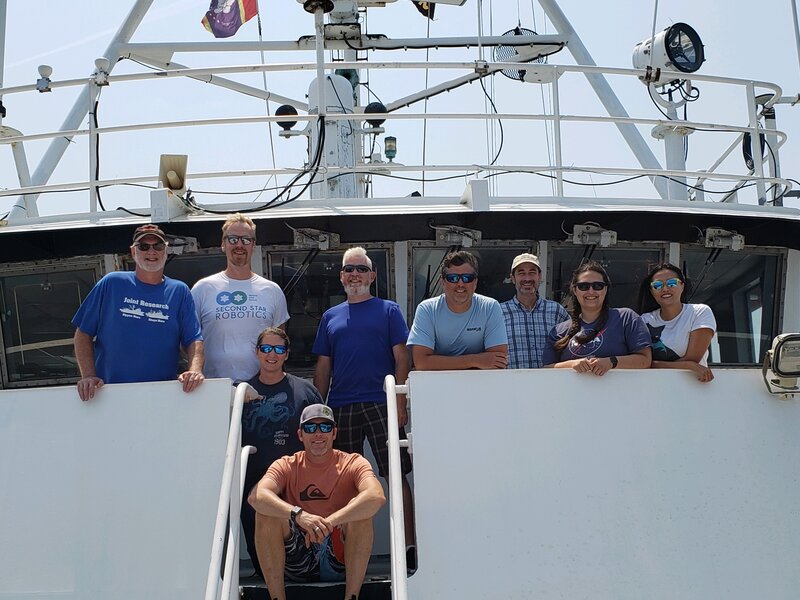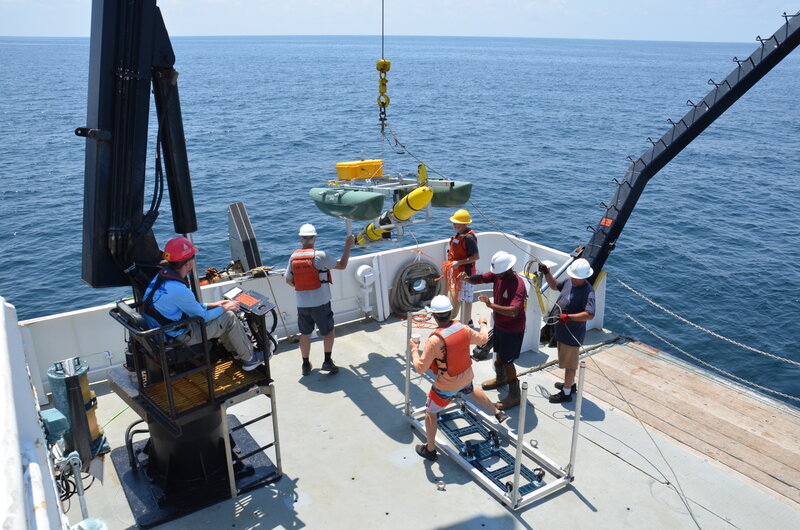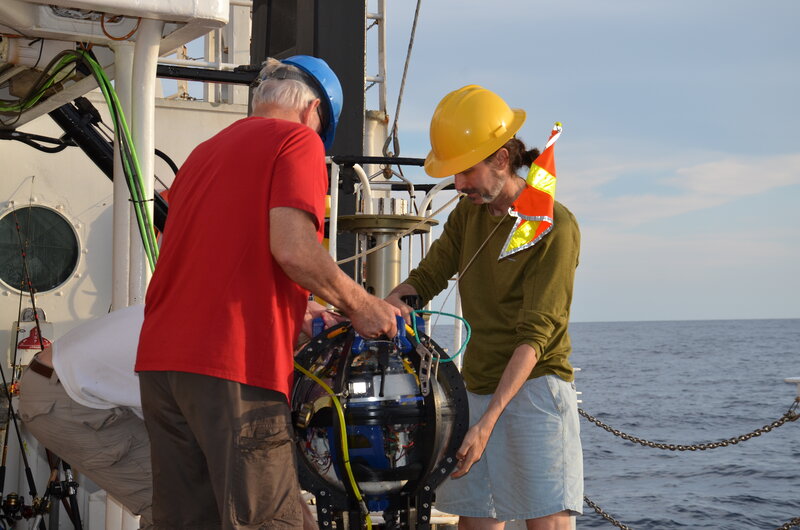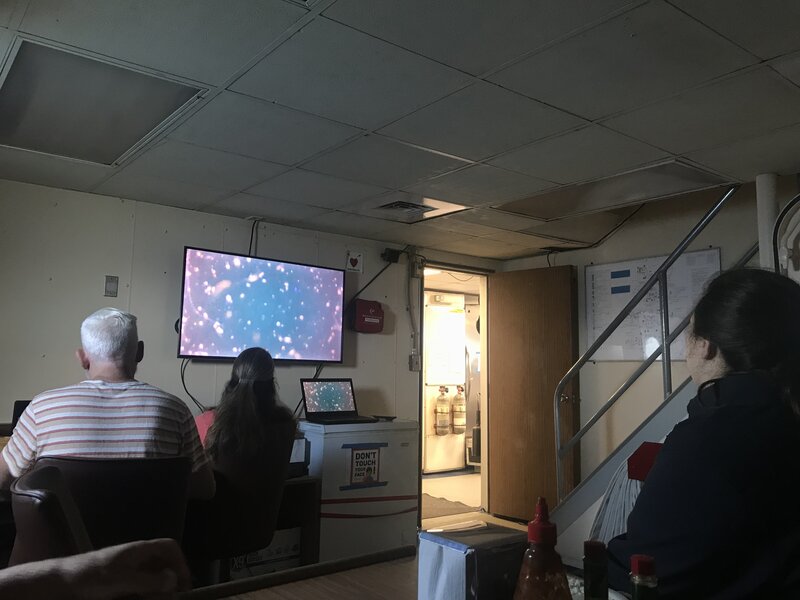
By Lu Wang, NOAA Ocean Exploration
Impactful science often comes from collaborative efforts, when experts from different disciplines assemble to provide unique perspectives and form new ideas. Driven by a shared interest in understanding complex phenomena in the deep ocean, multidisciplinary collaboration forms the backbone of this project, the goal of which is to leverage two engineering endeavors (the Driftcam and an autonomous glider) to collect video and acoustic data to study the biology of the deep scattering layer.
Collaborators from academia, industry, non-profit, and NOAA — spanning the fields of biology, acoustics, computer science, oceanography, and engineering — joined forces to accomplish this goal. How did this group of people come together in the first place?

Mission personnel on board R/V Point Sur. Image courtesy of April Cook, Nova Southeastern University. Download largest version (jpg, 929 KB).
This project began as siloed, independent projects and conversations between small groups of collaborators. The principal investigator (PI) on this project, Kevin Boswell, Ph.D., assembled the glider team with Chris Taylor, Ph.D., of NOAA National Centers for Coastal Ocean Science (NCCOS) and Chad Lembke of the University of South Florida (USF) Center for Ocean Technology. Chris and Chad had just completed incorporating acoustic capabilities into autonomous gliders and had existing collaborations with researchers at the University of Washington (UW). During this cruise, collaborators at USF (Chad Lembke and Alex Silverman) are provided shoreside support for the glider team, while the UW team aboard the R/V Point Sur led the glider’s “acoustic brain” processes.

The glider team deploys the glider using the ship’s overhead crane. Image courtesy of April Cook, Nova Southeastern University. Download largest version (jpg, 8.3 MB).
National Geographic Society’s Driftcam was added to the project more serendipitously. April Cook, Project Manager for the Deep Pelagic Nekton Dynamics of the Gulf of Mexico (DEEPEND ) Consortium learned about the Driftcam at a conference, and was interested in its capabilities for exploring the deep scattering layer. The DEEPEND Consortium aims to characterize the northern Gulf of Mexico marine ecosystem, and is a progression of the Sutton lab’s involvement with NOAA’s Natural Resource Damage Assessment (NRDA) process as part of NOAA’s Damage Assessment, Remediation, and Restoration Program after the Deepwater Horizon oil spill in 2010.
After the conference, April followed up with the Driftcam team and included Tracey Sutton, Ph.D., principal investigator for the DEEPEND Consortium, and the aforementioned Kevin Boswell, long-time collaborator on the NRDA project, in these initial conversations. At this point, the team realized that both the Driftcam and the autonomous glider could be used to explore the deep scattering layer, and they needed to find a way to converge and test these technologies in the open ocean. They decided to submit a proposal to the NOAA Ocean Exploration Notice of Funding Opportunity. Everyone contributed their expertise to the proposal writing process, and produced a successful proposal that was recommended for funding.

A member of the glider team helps a member of the Driftcam team move the Driftcam after it was retrieved from sea. Image courtesy of April Cook, Nova Southeastern University. Download largest version (jpg, 6.2 MB).
Managing a multidisciplinary project is not without its challenges. Communication, in particular, can be difficult, and it is important to have a clear understanding across disciplines when determining mission goals. For example, it is important to know when engineering or biological details are important, and when they are not. The engineering team may aim for instruments to go to a very specific depth, while the biologists on board may be able to work with a range of depths that allows them to observe organisms within scattering layers and describe ecological processes.
Assembling all of the emerging science tools is a unique aspect of this project. But at its core, this project is driven by an interest in exploring the biology of deep scattering layer. The biologists set the goals and constraints for the types of tools that are useful and necessary, and must effectively communicate these goals to the engineers who know and understand the tools. From beginning to end, communication is the throughline of this mission.

Members of the science team are transfixed as they watch video from the National Geographic Society’s Driftcam, taken from 70 meters (230 feet) depth. Image courtesy of April Cook, Nova Southeastern University. Download largest version (jpg, 1.9 MB).
Published August 4, 2021